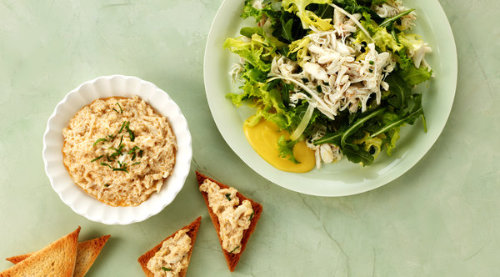From The NY Times Magazine
 William Brinson for the New York TimesThere are two ways to get crab this season. One is beautiful, hard work. It requires only a chicken neck, string, a net and access to coastal Atlantic waters. Tie the string to the neck and dangle it into the shallows where you can see the bait. Here comes Mr. Crab. Here comes Mr. Net. Repeat until you’ve got enough for dinner. Children can do this — and will — until you’ve got enough crabs for two dinners. Steam them and start picking.
William Brinson for the New York TimesThere are two ways to get crab this season. One is beautiful, hard work. It requires only a chicken neck, string, a net and access to coastal Atlantic waters. Tie the string to the neck and dangle it into the shallows where you can see the bait. Here comes Mr. Crab. Here comes Mr. Net. Repeat until you’ve got enough for dinner. Children can do this — and will — until you’ve got enough crabs for two dinners. Steam them and start picking.
The other method is easier and more realistic for the majority of us who don’t live near coastal Atlantic waters: Buy some. For this weekend’s cooking, get picked blue crab — pasteurized, refrigerated Callinectes sapidus, known as the savory beautiful swimmer — at the market, jumbo lump or backfin meat, from an American harvester. The most famous blue-crab fishery in the world is in the Chesapeake Bay, but the crabs are caught north of there and South to Florida waters.
A pound will do for dinner for four, though there are those who can eat a pound alone. These people can catch their own dinner. Crab is expensive. It is also rich.
You might make crab cakes, stretching the meat out with ground crackers or bread crumbs, binding everything with egg. But a higher, better summertime use of crabmeat is to dress it simply and pair the result with greens in a salad, or to warm it in butter and cream, scent it with sherry and serve it with toast.
For the salad, I turned to the British chef and restaurateur April Bloomfield, whose John Dory Oyster Bar in New York sometimes serves a slightly spicy crab salad with arugula and the tender fall chicory known as puntarelle. Here we have swapped out the greens for a mix of endive and actual chicory, and the Holland chili pepper she uses for the more accessible jalapeño. The result accentuates the sweetness of the crab, with a fiery slickness beneath it.
For the creamier version, I went into the way-back machine for a recipe from Marjorie Kinnan Rawlings, the Florida writer and cooking fanatic who won a Pulitzer Prize for her novel “The Yearling” in 1939. Her “Cross Creek Cookery,” from 1942, is a paean to the food of rural Florida made by high WASPs in an age overshadowed by war. The book celebrates the peace and plenty of an era that was passing fast: much butter, much cream. Her cooking, she wrote, is “on the rich side. I should not recommend some of the dishes for daily consumption.” It is also fantastically good.
Crab Newburg was Rawlings’s most celebrated dish, the one on which she claimed laurels as a cook. It is a version of the famous 19th-century lobster recipe popularized at Delmonico’s in New York.
Making it is an easy business, as much an assemblage as a recipe. You heat crabmeat in an enormous amount of butter, thicken it slightly with flour, thicken it a great deal with cream and eggs and cut the fat (slightly) with spices and booze. The resulting pinkish stew ought to be served with toast points or in a puff-pastry shell, perhaps with rice and absolutely with a green salad with a tart, lemony vinaigrette. Rawlings admits that you might use less cream, or less butter or fewer eggs. “The brandy may be omitted,” she cautions, “but never the sherry.”
You’ll want to set everything up well before dinner so that you can work quickly and serve the dish directly from the pan. Newburg is not a dish that takes well to sitting around. It thickens in the middle. It slows way down. Rawlings offers strong advice for home cooks about how to prevent that. Once you’ve got the sauce smooth and hot, she writes, “warn the guests to drink their last cocktail or highball.” Then, she adds: “Stir in the sherry. Beat the eggs.”
Hers is recipe writing for the “Thin Man” movies, with Myrna Loy and William Powell. The results are no less enjoyable.
Bloomfield’s dish is lighter, and well suited to a beach-season lunch or balmy twilight dinner. The acidity of the greens, crisp and cool from their time in an ice bath, marries well with the garlicky pungency of the aioli, and perfectly complements the sweet crab.
Serve with a bracing white wine. And as Rawlings writes of her Newberg, “Sit back and await compliments.”
published by permisssion
originally published in the New York Times Magazine

